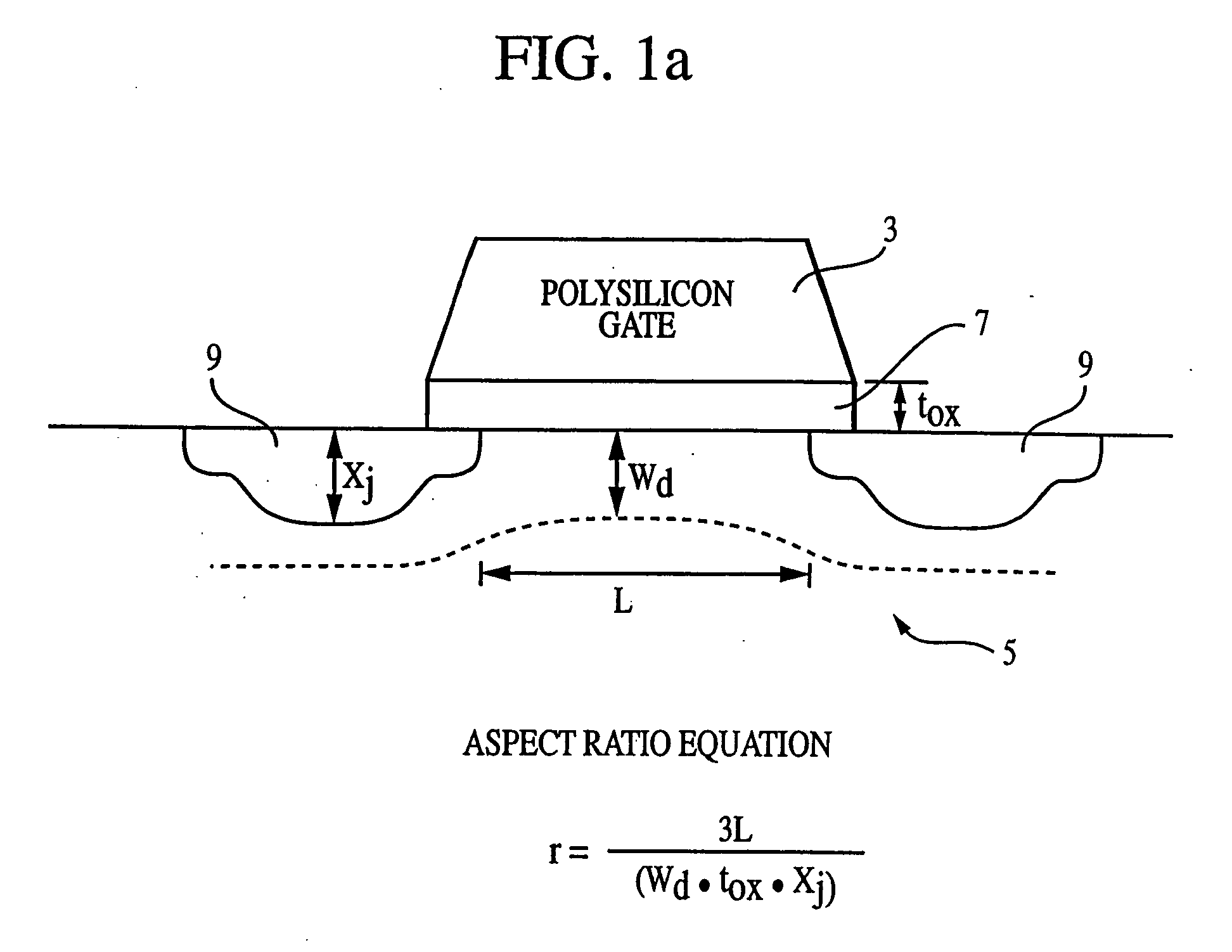Technique to mitigate short channel effects with vertical gate transistor with different gate materials
a technology of vertical gate transistor and gate material, which is applied in the direction of semiconductor devices, basic electric elements, electrical appliances, etc., can solve the problems of deviation from the predictable performance of larger scaled devices, difficult to scale junction depths to under 100 nm dimensions, and difficult to produce sub-micron devices that can perform as desired, etc., to achieve the effect of mitigating the negative
- Summary
- Abstract
- Description
- Claims
- Application Information
AI Technical Summary
Benefits of technology
Problems solved by technology
Method used
Image
Examples
Embodiment Construction
[0020] In the following detailed description, reference is made to various specific embodiments of the invention. These embodiments are described with sufficient detail to enable those skilled in the art to practice the invention, and it is to be understood that other embodiments may be employed, and that structural and electrical changes may be made without departing from the spirit or scope of the present invention.
[0021] In the following discussion the terms “wafer” and “substrate” are used interchangeably and are to be understood to refer to any type of semiconductor substrate, including silicon, silicon-on-insulator (SOI), and silicon-on-sapphire (SOS) technology, and other semiconductor structures. Furthermore, references to a “wafer” or “substrate” in the following description, do not exclude previous processing steps utilized to form regions or junctions in or on the base semiconductor structure or foundation.
[0022] No particular order is required for the method steps desc...
PUM
 Login to View More
Login to View More Abstract
Description
Claims
Application Information
 Login to View More
Login to View More - R&D
- Intellectual Property
- Life Sciences
- Materials
- Tech Scout
- Unparalleled Data Quality
- Higher Quality Content
- 60% Fewer Hallucinations
Browse by: Latest US Patents, China's latest patents, Technical Efficacy Thesaurus, Application Domain, Technology Topic, Popular Technical Reports.
© 2025 PatSnap. All rights reserved.Legal|Privacy policy|Modern Slavery Act Transparency Statement|Sitemap|About US| Contact US: help@patsnap.com



